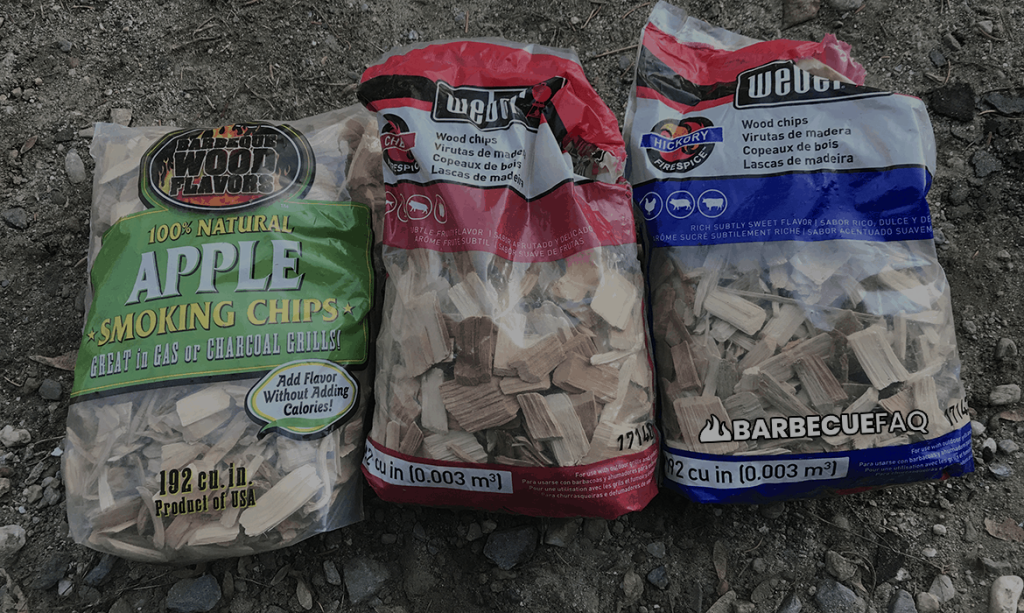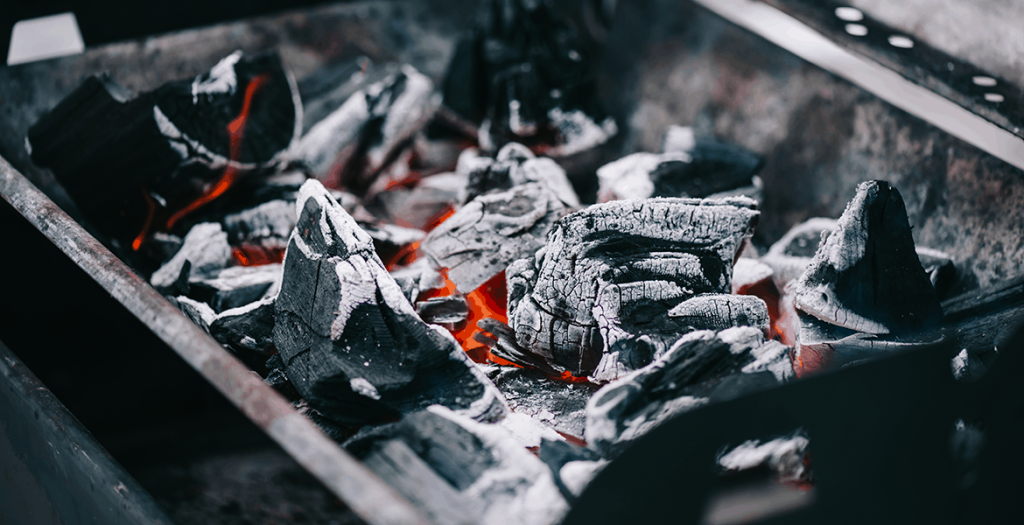The basic concept behind the “Minion” Method is to place a small number of lit charcoal (10-12 briquettes) on top of a unlit charcoal.
The lit charcoal will self-ignite the unlit charcoal over the course of your cook.

Why is it Called the “Minion”?
The inventor of the Minion Method is Jim “Minion” – hence the “Minion Method.”
Jim discusses how he discovered it on The Virtual Weber Bulletin Board forum – here.
The Minion Method Makes Low and Slow BBQ (225-275F) Easy
The reason the Minion Method is against the grain is because traditionally People are told to light their briquettes and to wait until all the coals have “ashed over” – turning from black to grey.
This is true for grilling, not for smoking.
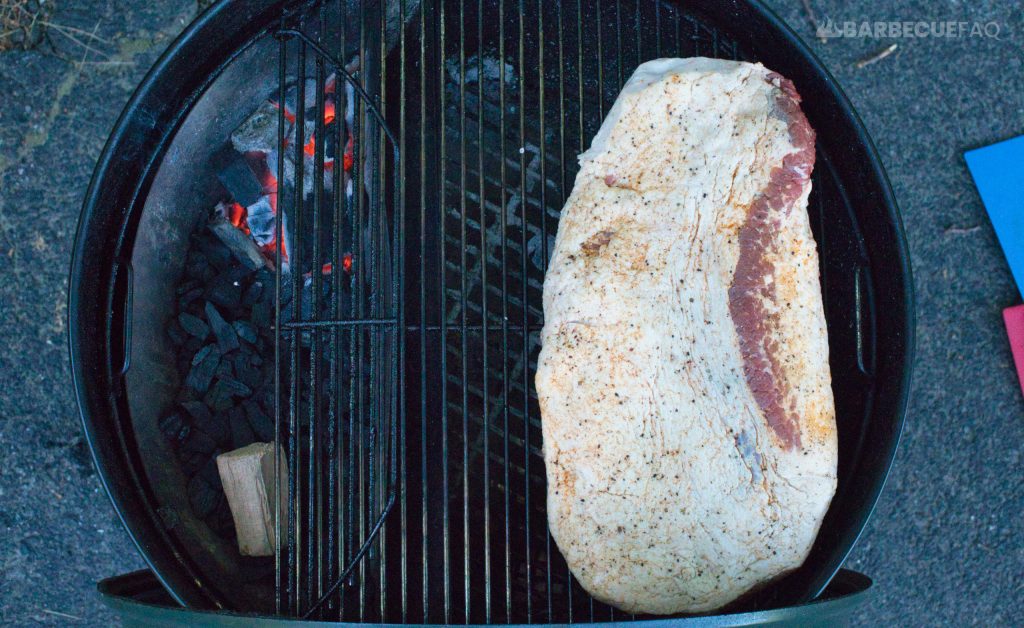
Allowing lit charcoal to light unlit charcoal is far easier than continuously adding small amounts of lit charcoal.
A charcoal smoker functions based on the fire triangle or “combustion triangle.”
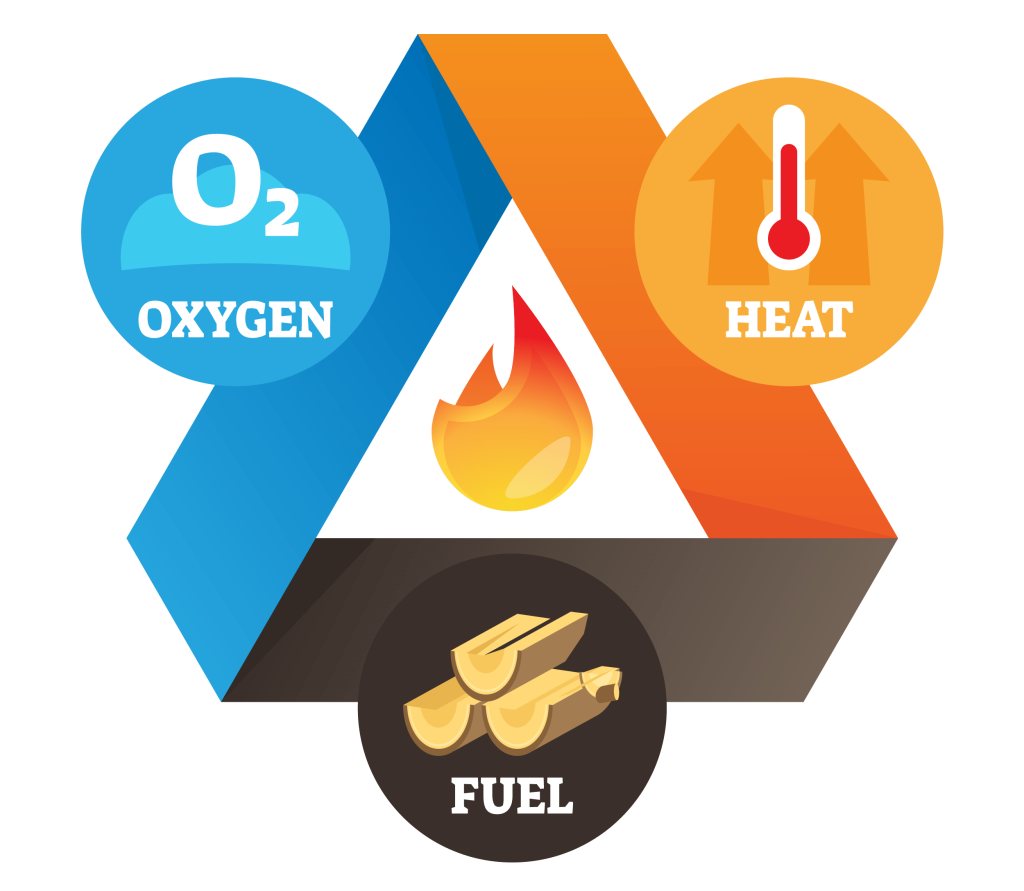
Starting your smoker with lots of hot coals will require you to choke the fire and starve it of oxygen to cool the fire down.
When adding wood, you’ll have “thick white smoke” because the fire is cooler.
The goal for smoke color is “thin blue smoke” which implies an equilibrium of the fire triangle and the burning process being deemed efficient.
You want a hot, clean burning fire.
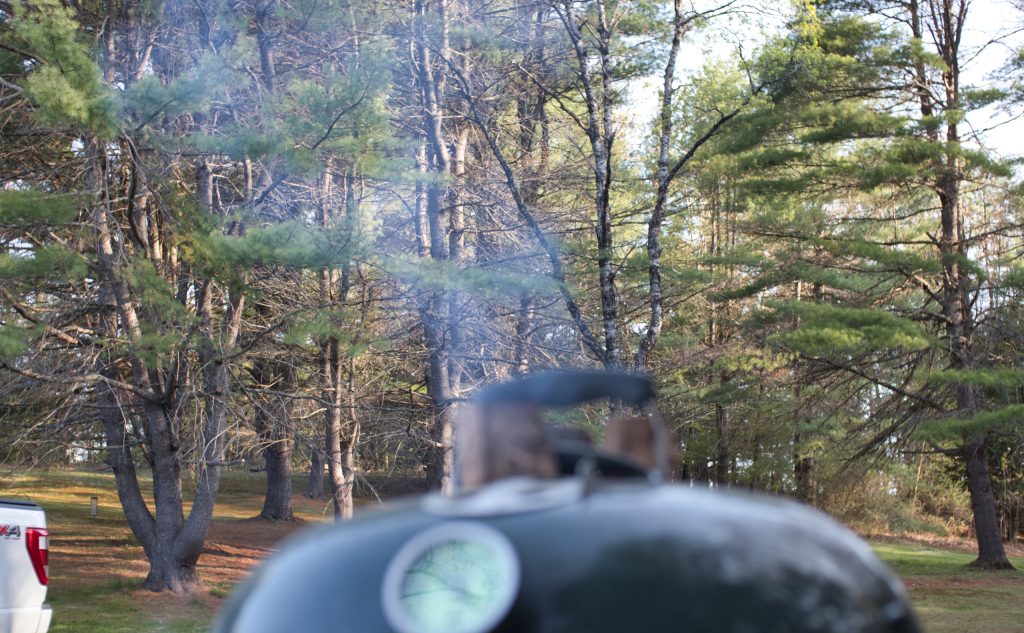
Does it Work with Charcoal Smokers other than the Weber Smokey Mountain?
Yes.
While Jim founded this method using the Weber Smokey Mountain (WSM), the concept can be applied to all charcoal smokers.
Whether you use a WSM, Weber Kettle, Drum Smoker, or a Kamado smoker.
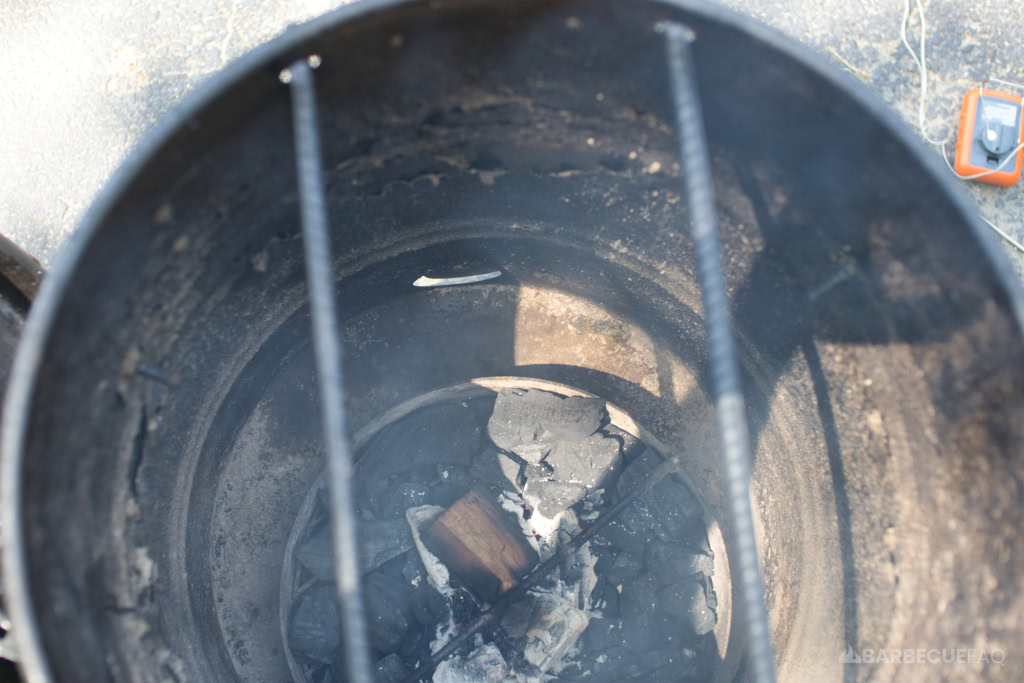
This method is even suggested by companies like the Pit Barrel Cooker (PBC) – Granted, they don’t market it in that way or even mention “Minion.”
How Long Does a “Minion” Last?
This is hard to estimate and dependent on your smoker, fuel, outdoor temperature, etc.
Here’s some rough estimates I’ve personally seen:
- WSM @ 225F for 12-16 hours, refilling water pan every 3-4 hours
- PBC @ 300F+ for 7-8 hours
- Weber Kettle + Slow N’ Sear 5-8 hours with briquettes.
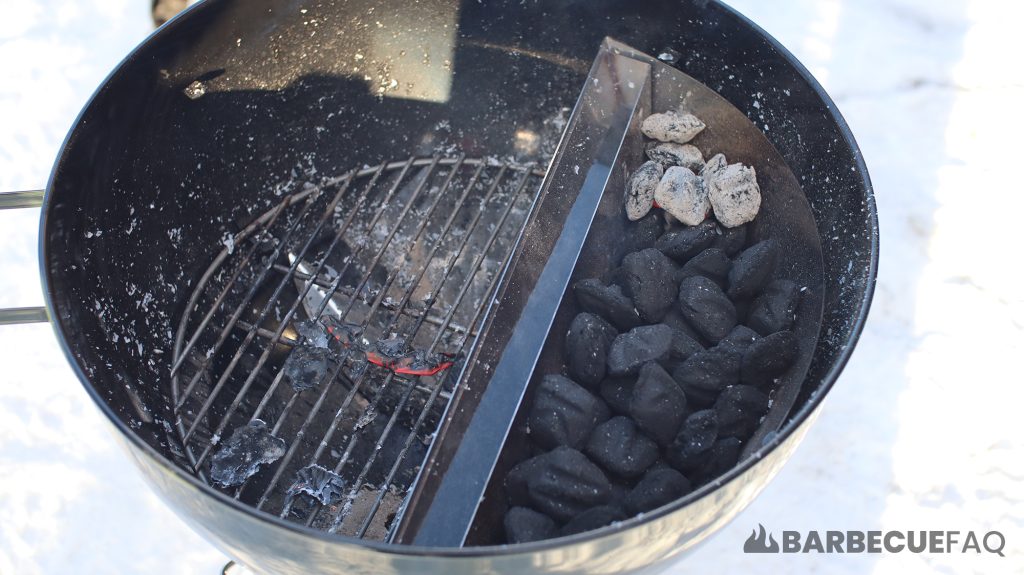
There’s also methods like the “Charcoal Snake” which are just strategic arrangements of the minion method.
Unless you’re smoking something huge like a brisket or a pork butt, this isn’t super necessary.

Can You Use Lump Charcoal Instead of Charcoal Briquettes?
Yes.
The first image at the start of this article is uses lump charcoal.
However, there are some important points to note.
The main reason briquettes are used is because they’re uniform; Lump charcoal – regardless of brand – is not.
Lump charcoal is a natural product produced in a kiln. Where-as briquettes are made of several materials (wood particles, saw dust, mineral char, and additives) that are compressed into one briquette.
Kamado-style smoker Manufacturers will often recommend using lump charcoal – less ash production that stifles the oxygen/intake damper.
Other Ways to Arrange Charcoal with the Minion Method
The most popular alternative is the “can” method.
Essentially, hot coals are placed in a bottomless tin can (like a can of beans) in the center of the charcoal basket.
Unlit charcoal is placed around the can; The can is then removed from the charcoal basket (with pliers) and you’re left with lit charcoal in the direct center of the charcoal chamber.
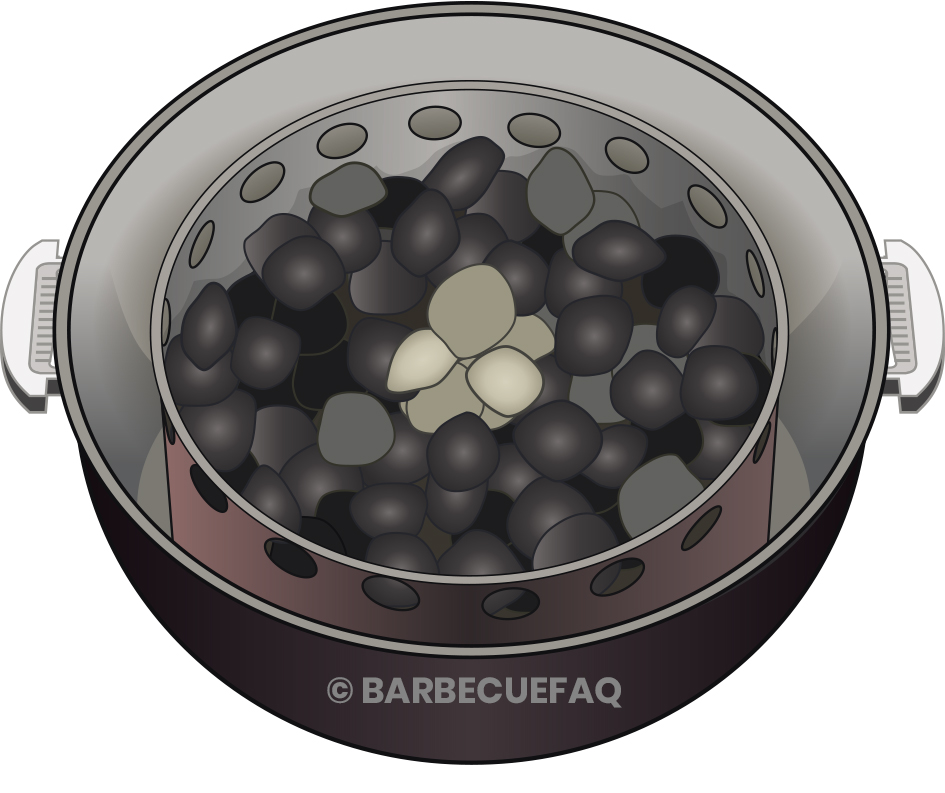
The above method was thought of by Bruce Kennedy – or as a User referred to it as “Kennedy’s Kan” – on the VWB Forums.
The main reason this idea was proposed is that it requires you to refresh the coals less often. During long cooks (10+ hours) the ash from briquettes may accumulate which will require you to stir the coals up.



